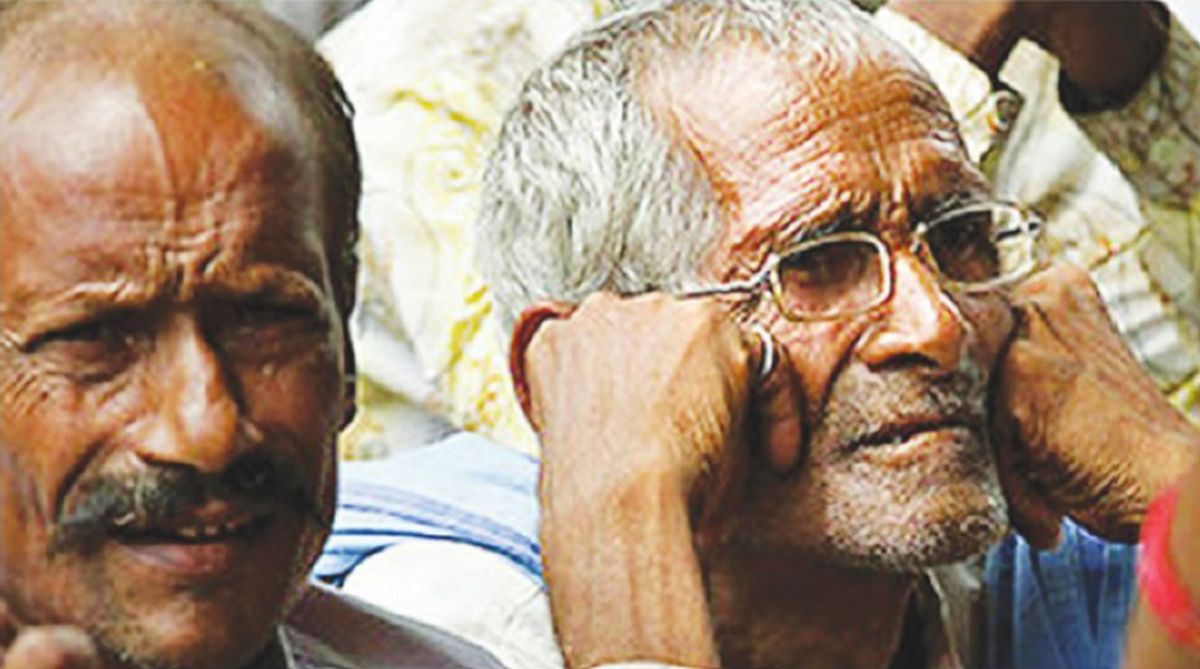Less than 10 per cent of senior citizens in India have access to regular and reasonable pensions. They are mostly those who have served in the civil government, armed forces and related parts of the formal sector. For the remaining over 90 per cent of senior citizens, pensions are either non-existent or grossly inadequate.
The pensions for this unorganized sector are provided mainly by the Indira Gandhi National Social Assistance Programme. Out of the nearly 80 million elderly citizens in this informal sector, this scheme of the Union Government manages to reach just about 22 million people. Many others have been denied pension due to insistence on Aadhaar and biometric recognition, various irregularities and other factors. Thus around 60 million elderly people are still waiting to get the pension.
Advertisement
This scheme of the Union Government distinguishes between two age groups of elderly citizens – 60 to 79 years and 80 years onwards. In the second age-group the Union government provides Rs. 500 per month per person. However, the overwhelming majority of elderly people are in the former age-group. For this age group, the contribution of the Union government is, believe it or not, just Rs. 200 per month.
At a time when highly dubious projects worth tens of thousands of crores have been cleared without much thought and huge income raises are provided to senior officials and politicians as a routine matter, when the number of billionaires in the country is higher than ever before, the pension offered to elderly citizens who toiled from morning to night as farmers and workers for at least four decades is just Rs. 200 per month.
This was fixed about a decade back and has not been changed since then despite many demands, protests and recommendations to increase the sum. During this period the value of this amount at present day prices has dwindled to just about Rs. 93 or so. This is an amazing and extremely distressing indicator of how much concern the government has for senior citizens.
To this amount provided by the union government the state government generally adds a contribution of its own under this scheme. In some of the smaller states like Goa, Kerala and Delhi the state governments for a long time have been making a significant contribution so that the selected elderly citizens (not all elderly citizens) in these few states are able to get a pension of around Rs. 2000 or so. But this has happened only in a few states with relatively smaller populations so that on the whole the proportion of these elderly citizens is relatively small at the national level.
In several states with much higher numbers of elderly citizens, the contribution of the state government is very small. For example, in Uttar Pradesh, Madhya Pradesh, Bihar and Gujarat the pension under this scheme even after adding the state contribution remains less than Rs. 500 per month. The previous government in UP had a separate Samajwadi pension of Rs. 500 but the Yogi government ended this scheme soon after taking over.
So, on the one hand about 60 million elderly people are not getting any pension and on the other hand those who manage to get a pension get a very meager amount. Even these pensions often do not reach them in time and many of these elderly persons expend a lot of effort and often some money to obtain their pension.
Their problems increased significantly after the introduction of Aadhaar and biometrics-based identification. The system of grievance removal which exists today leaves much to be desired and it is difficult for elderly people to get prompt action on their complaints.
These and other problems in relation to pensions have been highlighted repeatedly in recent years by Pension Parishad, an organization working for pension rights in a vast area of the country reaching out to remote villages as well. Its efforts are supported by several organisations working for the poor in remote parts of the country.
In early October a public hearing and protest by this organization in Delhi attracted nearly 10,000 elderly citizens from various parts of the country including a very large number of women. Representatives of many leading political parties came to extend their support to the demands of the Pension Parishad, although it remains to be seen to what extent they will live up to their promises.
Briefly, the Pension Parishad has demanded a pension of Rs. 3000 per month or one half of the minimum wage rate which should be available to all senior citizens (leaving aside only those senior citizens who are already getting a higher pension or else are still earning enough to be in the income tax paying category). This objective can be achieved if the Indira Gandhi National Social assistance Program can get an allocation of around 1.7 per cent of GNP (compared to 0.04 per cent which it gets today). Considering that allocations for this programme have not been raised for a long time, this demand should get attention now.
The writer is a freelance journalist who has been involved with several social movements and initiatives.











